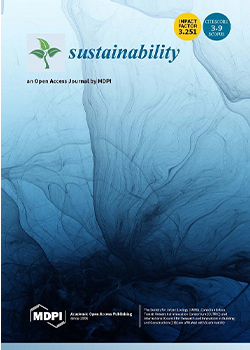
Farm Rejuvenation-Induced Changes in Tree Spatial Pattern and Live Biomass Species of Cocoa Agroforests in Central Cameroon: Insights for Tree Conservation Incentives in Cocoa Landscapes
Year of Publication: 2021
Authors: Frederick N. Numbisi, Dieudonne Alemagi, Ann Degrande, and Frieke Van Coillie
Abstract
Abstract: Cocoa agroforests sustain ecosystem services (ESs) to varying degrees. These services are otherwise mostly provided by other non-cocoa shade or companion trees. However, the density of shade trees is associated with services and/or disservices that drive farm-specific tree management successions. Considering the growing impacts of climate crisis on farm productivity and the need for adaptation strategies, the ESs are increasingly provisional and contingent on the prevailing vegetation, land tenure, and management successions, amongst others social and ecological factors.
To assess the temporal changes in shade management, we surveyed an age gradient of “family farms” in cocoa agroforests created from forest (fCAFS) and savannah (sCAFS) land cover. We evaluated the temporal changes in farm structure, relative tree abundance, and live aboveground biomass of the major canopy strata. We used a spatial point process and linear mixed effect analysis to assess the
contributions of associated perennial trees (AsT) on farm rejuvenation patterns. The density of cocoa trees was inconsistent with farm age; this was significantly high on farms in sCAFS (1544 trees ha−1)
with spatially random configuration across farm age. On farms in fCAFS, we observed a transition of the cocoa tree configuration in the order regular, random, and clustering from young (with highest density of 1114 trees ha−1) to old farms. On a temporal scale, there is no clear distinction of farm
structure and biomass between fCAFS and sCAFS. However, the cycle of tree species and structural composition of the canopy strata are dissimilar; the live biomass allocation for the considered use groups of tree species was different with farm age. The observed dynamics in canopy tree structure and live biomass provide insights into farmers’ temporal allocation of uses and prioritization of different tree species with farm age. We recommend the consideration of such landscape-specific, tree management dynamics in proposing on-farm tree conservation incentives. Our results are also conducive to reliable estimates of the ecosystem services from CAFS in the national implementation of conservation mechanisms such as REDD+
.
contributions of associated perennial trees (AsT) on farm rejuvenation patterns. The density of cocoa trees was inconsistent with farm age; this was significantly high on farms in sCAFS (1544 trees ha−1)
with spatially random configuration across farm age. On farms in fCAFS, we observed a transition of the cocoa tree configuration in the order regular, random, and clustering from young (with highest density of 1114 trees ha−1) to old farms. On a temporal scale, there is no clear distinction of farm
structure and biomass between fCAFS and sCAFS. However, the cycle of tree species and structural composition of the canopy strata are dissimilar; the live biomass allocation for the considered use groups of tree species was different with farm age. The observed dynamics in canopy tree structure and live biomass provide insights into farmers’ temporal allocation of uses and prioritization of different tree species with farm age. We recommend the consideration of such landscape-specific, tree management dynamics in proposing on-farm tree conservation incentives. Our results are also conducive to reliable estimates of the ecosystem services from CAFS in the national implementation of conservation mechanisms such as REDD+
.
